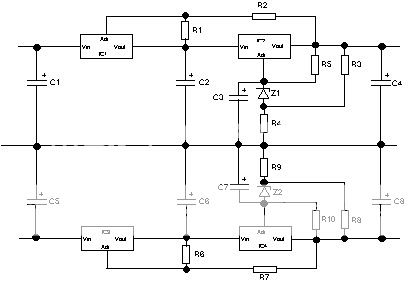13mh13
Pi-s Artist
In this diyaudio post, Martin noted "the tracking preregulator as shown in the old LM117 / 317 datasheet works really well where higher performance is required even for fixed voltage outputs."
For the datasheet tracking reg, does one compute Vout by appyling the standard formula to the 2nd LM317 -- also taking into account the extra Vref (so, a total of 2 x Vref) -- or is there a bit more to calculating Vout?
For the datasheet tracking reg, does one compute Vout by appyling the standard formula to the 2nd LM317 -- also taking into account the extra Vref (so, a total of 2 x Vref) -- or is there a bit more to calculating Vout?



